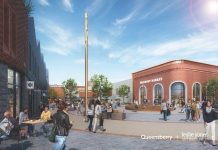The hottest slice of the commercial property market this summer is the industrial and distribution sector where the current demand for warehouse and depot-style ‘shed’ space looks set to stretch well into 2018 and beyond.
That is the verdict of property agency Barker Storey Matthews whose agency teams in Peterborough, Huntingdon, Cambridge and Bury St Edmunds report no let-up in occupier demand for modern industrial units.
It is a view echoed by other property agencies and developers and has been reinforced recently by SEGRO – the industrial real estate giant – who reported a 23 per cent rise in pre-tax profits in the first six months of this year (2017).
Leading this surge in demand for industrial accommodation are the logistics companies and online suppliers who seek large, modern warehousing on sites close to cities and towns, as well as key road interchanges, to give them the most efficient distribution networks.
Barker Storey Matthews believes that this region is perfectly placed to capitalise on our society’s seemingly insatiable appetite for ‘click and collect’ and ‘click and deliver’ lifestyles which these companies fulfil.
Steve Hawkins, Managing Director, Barker Storey Matthews, explains, “Most in the commercial property sector acknowledge the industrial development ‘lag’ which followed the 2008 financial crisis.
“But supply is now coming on-stream to meet demand and it’s the biggest sheds and warehouses which are attracting the interest. There are a number of substantial warehouse developments available in our region including Gateway Peterborough, Alconbury Enterprise Campus and Suffolk Business Park.
“These three schemes offer brand new, high quality buildings meeting the criteria of occupiers who are looking for accommodation to suit immediate demand and serve future requirements in this growing sector.
“These new hubs are located close to significant residential populations which suits recruitment and delivery purposes. They are at, or alongside key, road interchanges – giving access to all compass points of the country and beyond to the international ports. They offer warehouses and depot facilities as well as industrial and manufacturing buildings of a significant size and scale to accommodate the increasingly automated nature of logistics and distribution fulfilment.”


















